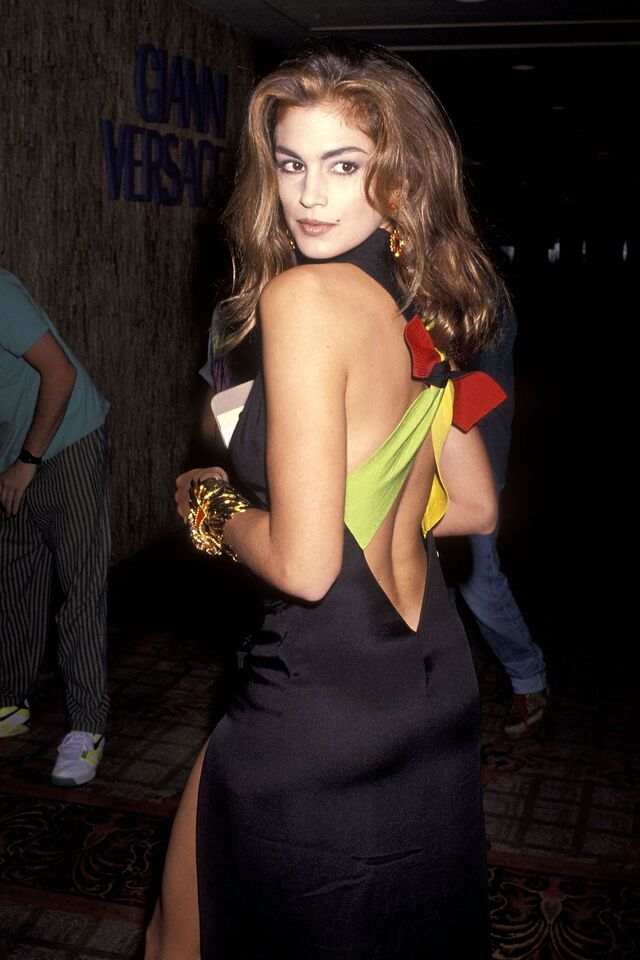Cindy Crawford is more than just a name; she’s a symbol of beauty, intelligence, and business acumen. Rising to prominence during the 1980s and 1990s, Crawford was instrumental in shaping the “supermodel” phenomenon. With her distinctive beauty mark, she redefined fashion standards and inspired generations of models. Beyond the runway, her entrepreneurial ventures and enduring influence on pop culture cement her as one of the most iconic figures in fashion history.
Early Life and Beginnings
Cynthia Ann Crawford was born on February 20, 1966, in DeKalb, Illinois. Growing up in a small Midwestern town, Crawford lived a modest life as the daughter of an electrician and a bank teller. Her journey into modeling began unexpectedly in 1982, when a local newspaper photographer snapped a picture of her while she worked detasseling corn in the fields. The photo sparked interest, leading her to enter the Look of the Year contest held by Elite Model Management. Finishing as a finalist in the competition, Crawford’s natural beauty and poise secured her a modeling contract and marked the beginning of her illustrious career.

Despite her early success, Crawford remained grounded and excelled academically. She graduated as valedictorian from DeKalb High School in 1984 and earned a scholarship to Northwestern University to study chemical engineering. However, the demands of her blossoming modeling career soon became impossible to balance with her studies. Realizing her true calling, she made the bold decision to pursue modeling full-time.
The Rise to Fame
Cindy Crawford’s move to New York City in 1986 proved to be a turning point. She quickly rose to prominence, earning her big break as the cover model for Vogue in August 1986. The decision not to airbrush out her signature beauty mark—a feature many considered a flaw—marked a revolutionary moment in the fashion industry. Instead of hiding her uniqueness, Crawford celebrated it, paving the way for individuality to be embraced in an industry obsessed with perfection.
The late 1980s and early 1990s marked the dawn of the supermodel era, and Crawford was at its forefront. She graced the covers of major fashion magazines and walked the runways of the world’s top designers. Her athletic, curvaceous figure and approachable personality gave her a rare cross-gender appeal, earning her fans across the globe.
In 1990, alongside fellow supermodels Christy Turlington, Naomi Campbell, Linda Evangelista, and Tatjana Patitz, Crawford appeared on the cover of British Vogue. This iconic image caught the attention of pop star George Michael, who featured the models in his legendary Freedom ’90 music video. Later, Gianni Versace showcased the same group at his couture show in 1991, an event that drew a standing ovation and solidified the supermodel phenomenon.

Cindy Crawford: Business Savvy Pioneer
While many models focused solely on their runway careers, Cindy Crawford demonstrated exceptional business acumen. She recognized the need to diversify and take control of her brand. In 1992, she launched her fitness video series Cindy Crawford: Shape Your Body, which became an international success and sold millions of copies.
Her commercial appeal was undeniable. Crawford signed a lucrative contract with Revlon, becoming a global ambassador for the brand. In 1995, her unforgettable PepsiCo campaign showcased her as the epitome of American beauty and charm, further elevating her status as a household name.
Unlike many of her peers, Crawford was one of the first models to venture into production. She established her own company, Crawdaddy Inc., which managed her projects and ensured her career longevity. This move reflected her business savvy and set a precedent for models to take ownership of their image and brand.

Cindy’s Impact on Pop Culture
Cindy Crawford was more than a supermodel; she was a pop culture icon. Her presence extended beyond fashion magazines and into music videos, television, and film. Her collaborations with music and entertainment legends solidified her status in mainstream media. In 1993, RuPaul’s hit song Supermodel immortalized Crawford and her peers, cementing their legacy as global celebrities known simply by their first names.
Crawford also became a role model for embracing natural beauty. Her confidence and refusal to conform to unrealistic beauty standards inspired countless individuals. By proudly showcasing her signature mole, she encouraged people to celebrate their unique features.
Acting Career and Writing Success
In addition to her modeling achievements, Crawford explored acting and media. She made her television debut with a recurring role in The Fresh Prince of Bel-Air and starred in the 1995 action film Fair Game. While her acting career did not reach the same heights as her modeling, it showcased her versatility and willingness to take on new challenges.

Crawford also authored Cindy Crawford’s Basic Face: A Makeup Workbook in 1996, sharing her expertise and beauty tips with her fans. In 2015, she coauthored Becoming, a memoir chronicling her life, career, and lessons learned along the way. The book celebrated her achievements and offered insight into her enduring success.
Life Beyond the Runway
Cindy Crawford’s personal life has been as captivating as her career. After a high-profile marriage to actor Richard Gere in the early 1990s, Crawford found lasting happiness with businessman Rande Gerber, whom she married in 1998. Together, they have two children, Presley and Kaia, who have followed in their mother’s footsteps to become successful models.
Crawford’s role as a mother and mentor has been central to her life. She has actively supported her children’s careers while instilling in them the values of hard work and authenticity.
Legacy and Contributions to Fashion
Cindy Crawford’s impact on the fashion industry is undeniable. She was one of the first models to transition seamlessly from the runway to business, setting a new standard for aspiring models. In 2009, her influence was honored at the Metropolitan Museum of Art’s The Model as Muse exhibition, which celebrated the models who defined fashion in the 20th century.
Her ability to evolve with the times and remain relevant speaks to her enduring legacy. Whether through her fitness videos, business ventures, or empowering advice, Crawford’s contributions continue to inspire people around the world.

Conclusion
Cindy Crawford’s journey from a small-town girl to a global icon is a testament to her talent, resilience, and vision. She redefined beauty, broke barriers, and pioneered a path for models to succeed beyond the runway. As a supermodel, entrepreneur, and role model, Crawford remains an enduring figure in fashion and culture, proving that true success lies in embracing one’s uniqueness and adapting to every challenge. Her legacy is not just one of beauty but of empowerment and timeless influence.



